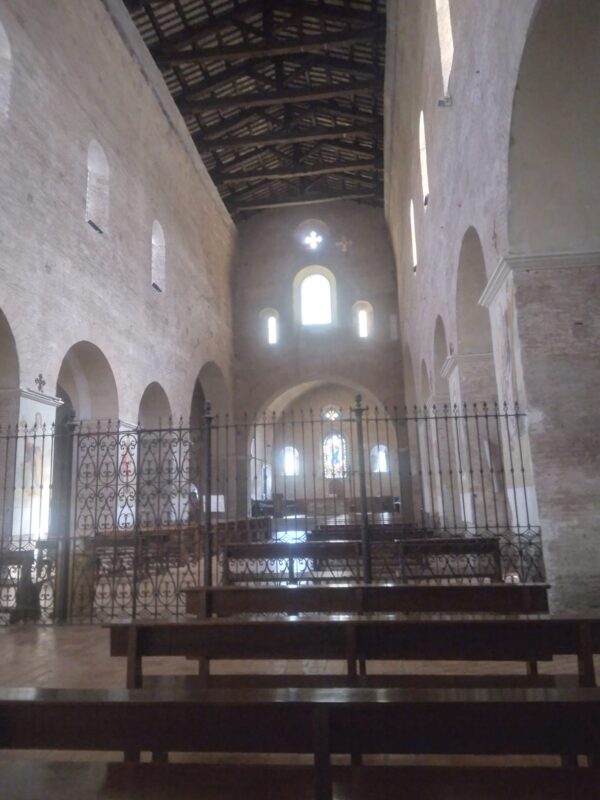A very austere but beautiful monastic church on the outskirts of Rome is the Cistercian Trappist Abbey of “Tre Fontane,” two words which mean “three fountains.”
Tradition holds that this was the place where Saint Paul was beheaded in the First Century A.D. When martyred, Saint Paul’s head is said to have bounced three times, from which sprung up three fountains of water. A smaller, separate church and shrine at Tre Fontane, was built centuries ago over the place of the three fountains. It is understandably a place frequently visited by pilgrims to Rome.
The Cistercian Order of came to the site in the 12th century and have been there ever since. The present church was dedicated in 1221, not long after the Cistercians Order was founded in France in 1098.
Today a small community of Cistercian Trappist monks and a likewise a small community of Cisterican Trappist nuns, who live on the same property, share the daily Mass and Divine Office in the abbey church.
This recent arrangement at Tre Fontane, of monks and nuns collaborating at the same monastery, is one of the ways European religious communities have come up with in order to carry on when new vocations are far fewer than in times past. It seems to be working well at Tre Fontane.
Abbot Christian and our Father Gregorio, who is studying in Rome, were able to visit Tre Fontane on Saturday, October 14th, and joined the two monastic communities for prayer in the abbey church at midday. At that time the metal grate visible in today’s photo is opened, and visitors are welcome to be seated in the pews closer to the monastic choir stalls and altar.
Abbot Christian and the monks

